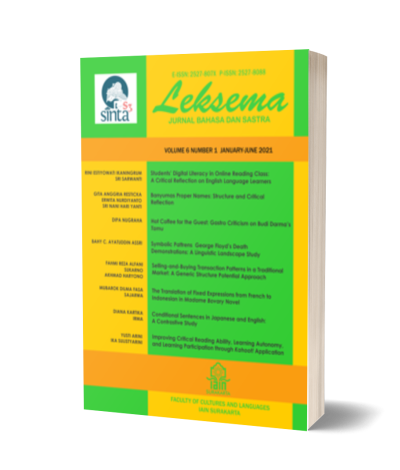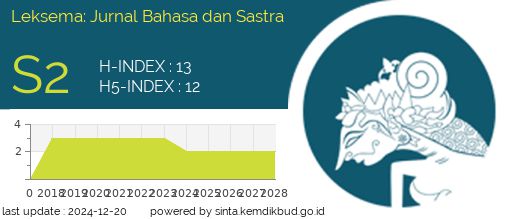| JOURNAL COVER |
 |
Author Guidelines
- The article must be scientific, either based on empirical research or conceptual ideas. The content of the article has not been published yet in any journal, and should not be submitted simultaneously to another journal. The article should not be part of fully one chapter of a thesis or dissertation.
- The article must be in the range between 5000-7000 words, not including title, abstract, keywords, and bibliography
- Article consisting of the various parts: i.e. title, the author’s name(s) and affiliation(s), abstract (150-200 words), Keywords (maximum 5 words), introduction, description and analysis, conclusion, and bibliography.
- The title should not be more than 10 words
- Author’s name(s) should be written in the full name without academic title (degree), and completed with institutional affiliation(s) as well as the corresponding address (e-mail address).
- Abstract consists of the discourses of the discipline area; the aims of the article; methodology (if any); research finding; and contribution to the discipline of areas study. The abstract should be written in English.
- The introduction consists of the literature review (would be better if the research finding is not the latest than ten years) and the novelty of the article; the scope and limitation of the problem discussed; and the main argumentation of the article.
- Discussion or description and analysis consist of the reasoning process of the article’s main argumentation.
- The conclusion should be consisting of answering research problems, based on the theoretical significance/conceptual construction
- All of the bibliography used should be written properly
- Citation’s style used is the author-date system of the Chicago Manual of Style 16th Edition. Examples are available on: http://www.chicagomanualofstyle.org/tools_citationguide.html
- In writing the citations would be better and suggested to use software of Mendeley citation manager with following standard of Chicago Manual of Style 16th Edition
- The article must be free from plagiarism; through attached evidence (screenshot) that article has been verified through anti-plagiarism software, but not limited to the plagiarism checker (http://plagramme.com).





